Abstract
Objective
Methods
Results
References
Fig. 1
The flowchart of the study. CIMT, constraint-induced movement therapy; VBT, visual biofeedback training.
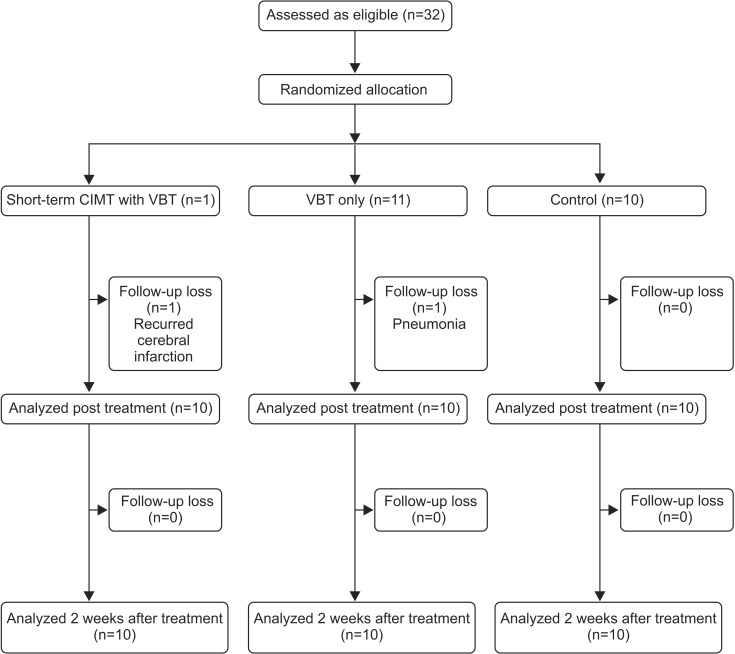
Fig. 2
Four possible motions in E-LINK program. (A) Disc grip. (B) Tip pinch. (C) Lateral pinch. (D) Wrist flexion and extension.
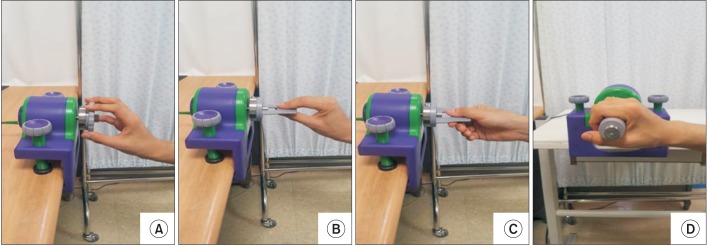
Fig. 3
The patient with right hemiparesis received 'behavior simulation.' The patient held a disc grip by finger flexors. (A) The patient tried to put the spoon in the bowl by forearm pronation. (B) On the other hand, the patient was required to supinate his forearm for getting the spoon to the mouth. There were three patients with left hemiparesis. (C) One received short-term CIMT and VBT simultaneously. (D) Another patient received only VBT. (E) Both patients participated in the catch balls' game. The other patient received conventional occupational therapy. CIMT, constraint-induced movement therapy; VBT, visual biofeedback training.
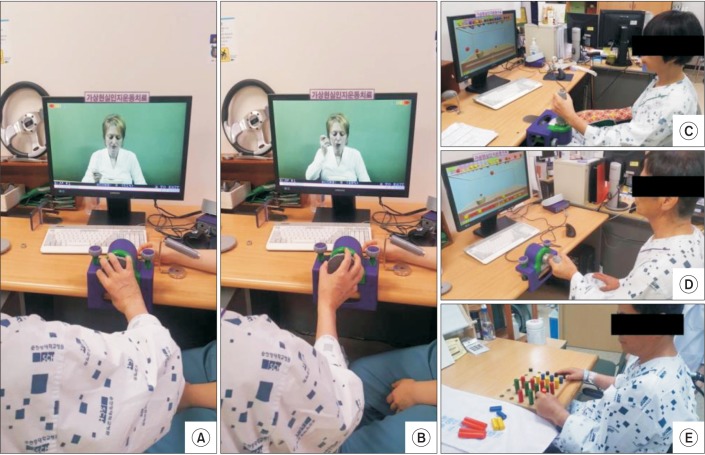
Fig. 4
This figure shows sequential changes in clinical parameters at post-treatment and 2 weeks after treatment in each group. Changes in grasp (A), pad pinch (B), WMFT (C), and FMA (upper extremity) (D). CIMT, constraint-induced movement therapy; VBT, visual biofeedback training; WMFT, Wolf Motor Function Test; FMA, Fugl-Meyer Assessment. a)p<0.05 (short-term CIMT with VBT group vs. control group), b)p<0.05 (VBT only group vs. control group), c)p<0.017 by the Mann-Whitney U test for post-hoc analysis.
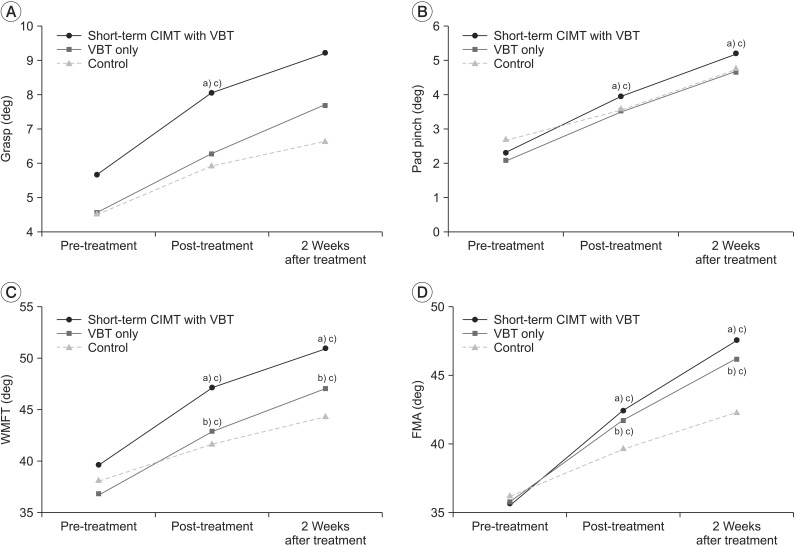
Table 1
Demographics and baseline clinical characteristics of study subjects
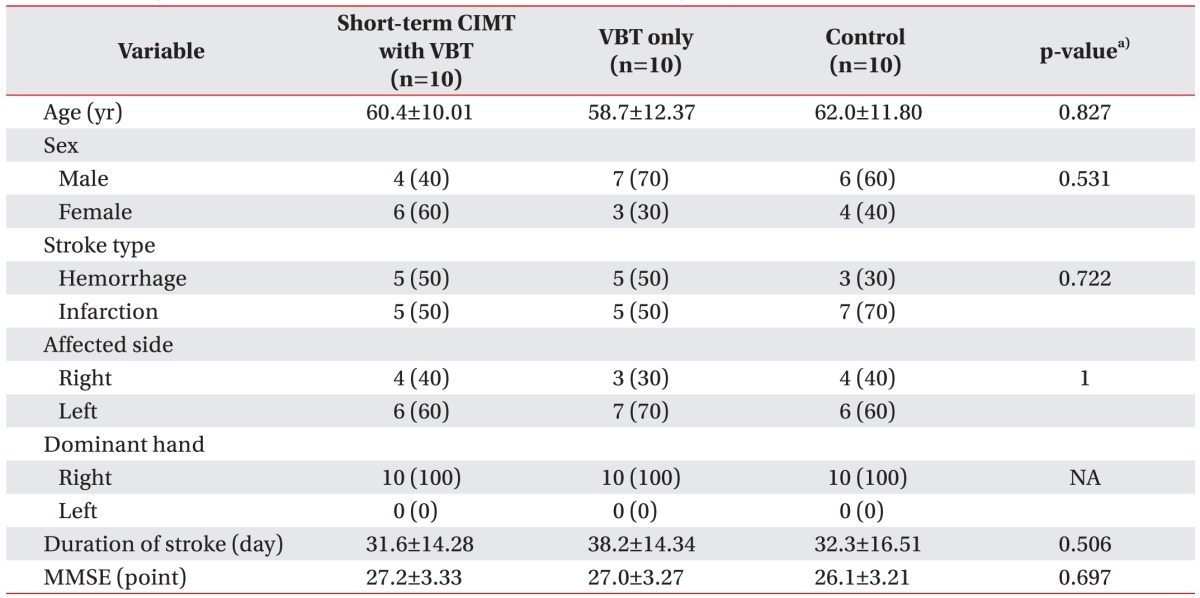
Values are presented as a mean±standard deviation or number of cases (%).
CIMT, constraint-induced movement therapy; VBT, visual biofeedback training; MMSE, Mini-Mental State Examination; NA, not available.
a)The p-values were derived from the Kruskal-Wallis test for quantitative variables and Fisher exact test for qualitative variables.
Table 2
Comparison assessments at baseline, after treatment, and 2 weeks after treatment in the three groups
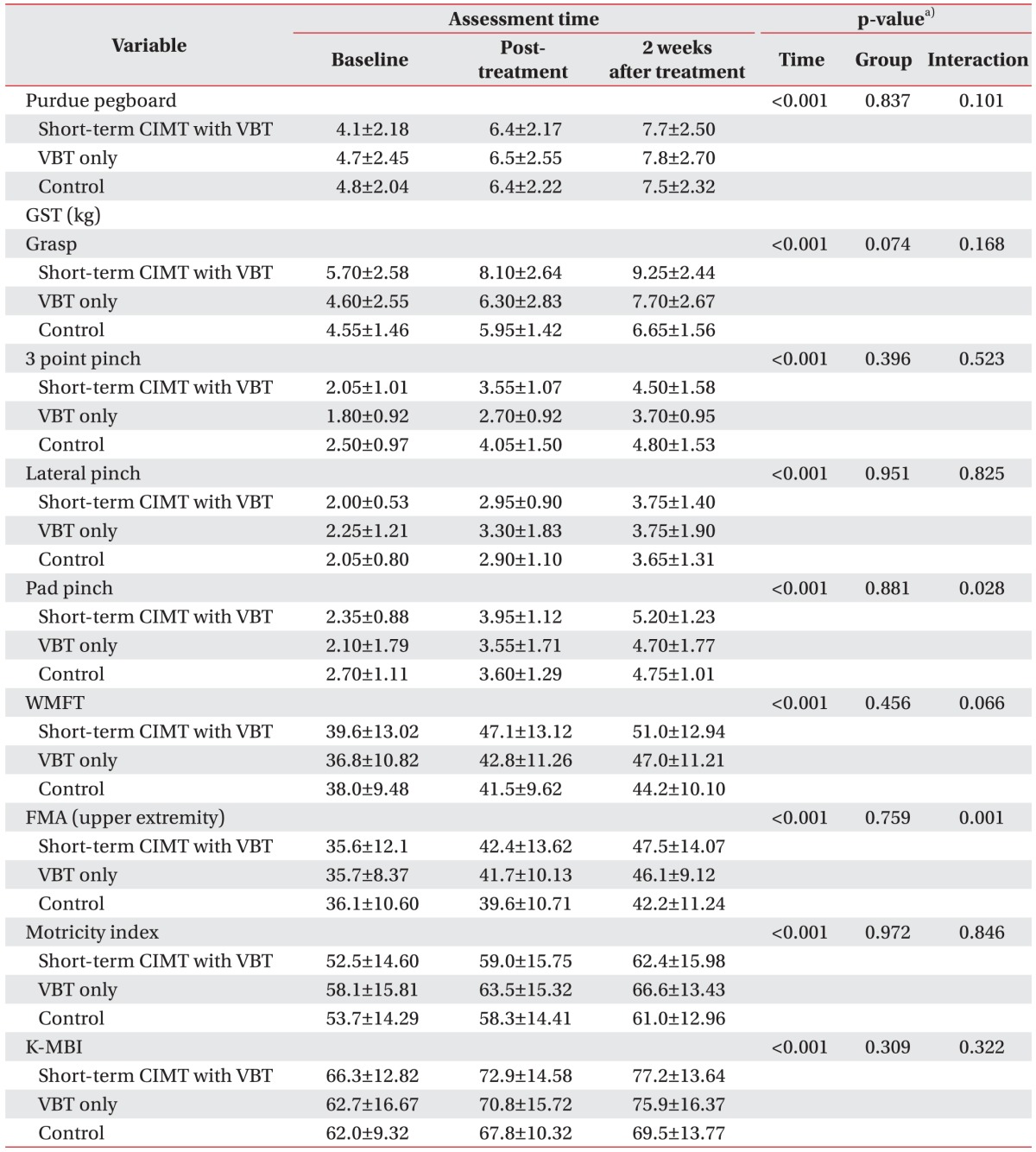
Values are presented as mean±standard deviation.
CIMT, constraint-induced movement therapy; VBT, visual biofeedback training; GST, grip strength test; WMFT, Wolf Motor Function Test; FMA, Fugl-Meyer Assessment; K-MBI, Korean version of Modified Barthel Index.
a)The p-values were derived from the two-way Friedman test. Post-hoc analysis was performed using the Bonferroni method.
Table 3
Comparison of improvement of clinical parameters at post-treatment and 2 weeks after treatment in each group
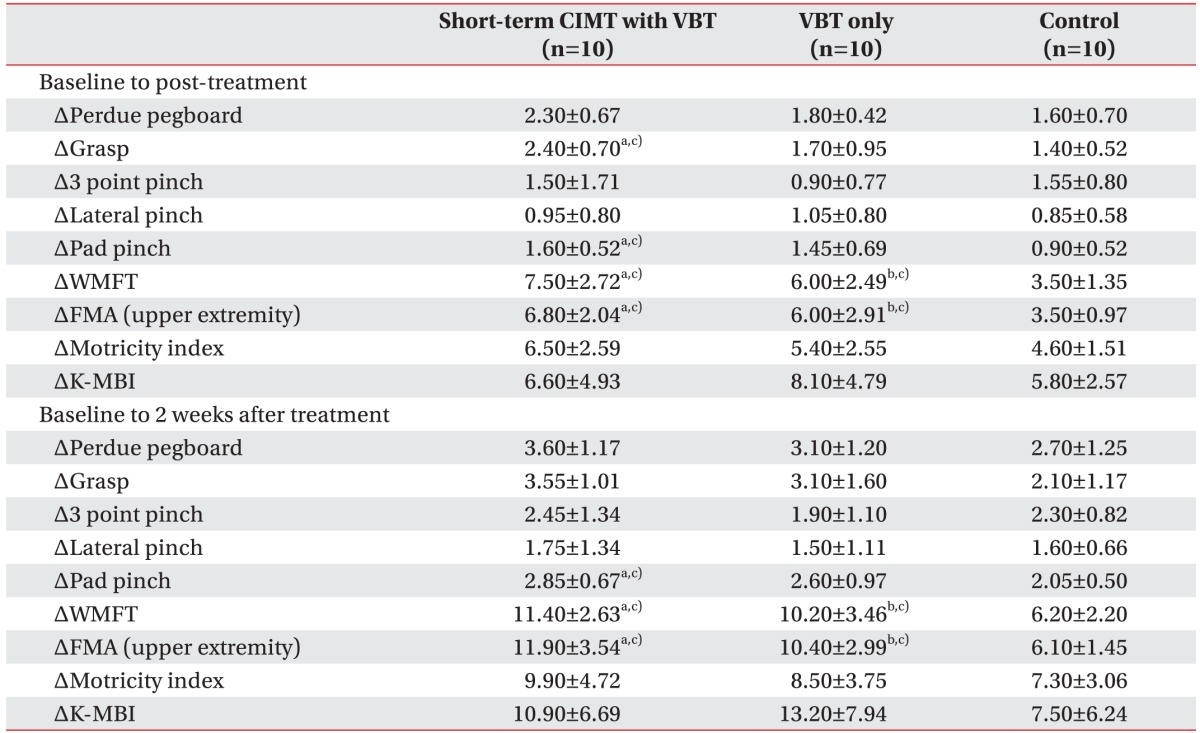
Values are presented as mean±standard deviation.
CIMT, constraint-induced movement therapy; VBT, visual biofeedback training; GST, grip strength test; WMFT, Wolf Motor Function Test; FMA, Fugl-Meyer Assessment; K-MBI, Korean version of Modified Barthel Index.
a)p<0.05 by the Kruskal-Wallis test (short-term CIMT with VBT group vs. control group).
b)p<0.05 by the Kruskal-Wallis test (VBT only group vs. control group).
c)p<0.017 by the Mann-Whitney U test for post-hoc analysis.




 PDF
PDF ePub
ePub Citation
Citation Print
Print



 XML Download
XML Download